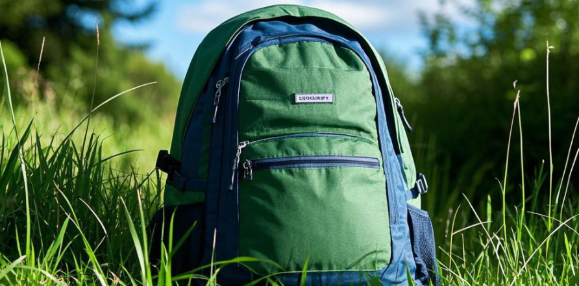The Rise of the Laptop Luggage Backpack
In such a technological era, most computer users, that is, professionals, students, and digital nomads, have a laptop as their regular equipment. A laptop is more than just a case for packing your laptop--safely, and comfortably--particularly, when you are traveling. This is where the laptop luggage backpack comes in as a crucial product. It not only has the benefits of a backpack but it also has a large storage area, compartments with advanced technologies, and the necessary accessories for travel. These features not only help you with daily travel but also serve as a travel bag for checking in on an airplane.
Thus, regular laptop carriers are not among this category; they are designed for those who are always on the go to other places all around the world. They are frequently equipped with USB charging ports for mobile devices, luggage trolley sleeves for convenience, TSA-friendly compartments for airport security, waterproof materials, and extra cushioning for safety and comfort during product transportation. So, have now even at that time, when a person is faced with multiple choices of the seemingly similar products, can he/she tell which one is right for him/her?
We bring to you here a systematic procedure for selecting a laptop luggage bag that completely agrees with your dressing style, kind of usage, and travel preferences. The steps are: materials and compartments used in a case study, comparison tools of different brands, and the explanation of ergonomics, all of which, if well understood, will lead to an informed decision.
Chapter 1: Laptop Luggage Backpacks - A Complete Guide
Laptop luggage backpack is a type of bag which can be used to carry:
- Padded divisions to prevent the laptop from being damaged by drops or bumps that may occur to the case or bag.
- Mobile cases, trolleys, or other items with sections that can be widened further for the user to have a choice
- Contactless, TSA-compliant, and made of water-resistant materials, they can be taken anywhere, even when one is traveling.
This, as a result, means that they are not only for those who are constantly on air traveling but also those who travel a lot such as digital nomads, professionals, and even students.
different types
- Backpack Only: Stylish and user-friendly design at that the same time it has enough compartments and is of the carry-on type, and do not forget to be thin.
- Wheeled Backpack: These have built-in wheels and you can use it as a regular backpack whenever not needed at the airport.
- Expandable Backpack: It is made consistent with travelers’ needs trying to provide a solution for the constantly changing dimension requirement, perfect for short business travels or overnight stays.
- Convertible Backpack: Quick and easy switch among backpack, briefcase, and slinging if you have multiple ways.
Chapter 2: Key Considerations Before Buying
1. Laptop Size Compatibility
Firstly, the backpack should have a solution for housing your laptop in the protective sleeve and it should also be the right size indicated by the laptop’s dimensions. This way, you can guarantee compatibility when the measurements of your laptop match the size of the dedicated sleeve of the backpack. Make it a point, however, it still has the elevated padding that assures the safety of your laptop despite the shocks and minor bumps.
2. Carrying Style
- Shoulder Backpack: Its hands-free convenience and comfortable carrying experience make it the best option for day usage and personal activities.
- Wheeled Backpack: Perfect for people carrying around larger loads, who want to save energy and not bother themselves at the airport.
- Hybrid Convertible: This one allows you to carry it any way you like it.
3. Weight and Volume
Heavy-duty yet lightweight materials like internal iron shell fabric and poly denim can prevent travel from becoming a burden on your shoulders. For a 20-35L capacity, which is suitable for a weekend trip, the lighter option is the better; if the travel period is longer, a bigger size is more recommended.
4. Organizational Layout
Take for example a separate padded laptop compartment
Several internal pockets and external pockets
5. Trolley Sleeve
It is a handle that is attached to the rear of the bag and enables you to use your luggage handle for easier transportation in airports.
Chapter 3: Materials and Build Quality
How the materials are used decides the longevity, the effects of water resistance, and the weight of a product
1. Nylon and Polyester
They are strong, light, and can keep your things safe from water. Ballistic Nylon is even stronger and used in luxury models.
2. Leather Accents
Although not fully waterproof, leather will allow for aging and the additional look of luxury, which is the characteristic of this material.
3. Canvas
This type of fabric is what makes your bag look attractive and suitable for a casual occasion but if it is dry only.
4. Zippers and Hardware
YKK zippers have set the industry standard for their durability. But if you add more features such as a waterproof lockable zipper, then this will give you extra protection.
5. Padding and Linings
Internal padding in a backpack is necessary for the protection of your electronic gadgets, whereas a soft lining will keep your devices in good condition. A thicker
Chapter 4: Tech-Friendly Features
1. USB Charging Ports
The built-in USBs are perfect for quick charging of smartphones from an in-built battery in the backpack.
2. RFID-Blocking Pockets
These wallets security-conveniently serve as a shield to the electronic pickpocket with the features like credit card and passport protection.
3. TSA-Friendly Design
Several bag models, including backpacks, are compatible with the 180° fold to be scanned with a laptop at the airport security checkpoint without removing the device.
4. Anti-Theft Features
With these rucksacks, you can at all times keep your valuables safe as they are equipped with multiple layers of protection including hidden zippers, locking mechanism, and secure pockets.
5. Smart Tracking
Top-tier backpacks will have tracking support for devices such as Apple AirTag or Tile, which is exceptionally beneficial to those who frequently travel by air.
Chapter 5: Ergonomics and Comfort
It doesn't matter that your backpack is the most feature-loaded in the world if it's going to make you uncomfortable.
1. Shoulder Straps
Go for the ones which are not only wide but also have padding and can be lengthened easily. Wide padded straps, S-curved together, fit so well that they create a natural resting position for the shoulders.
2. Back Panel
The mesh padding is airy and also has special channels that make it possible to eliminate moisture during the process of walking, this is also for added convenience.
3. Chest and Waist Straps
If the backpack is being used for a longer trek, it is necessary to use these straps which tighten the load and reduce pressure on the back. Also, for heavier backpacks, these straps are inevitable.
4. Weight Distribution
Always make sure to buy backpacks that are designed with multiple compartments to ensure that weight is evenly distributed across them. This will prevent a sore shoulder from developing on one side of your body.
Chapter 6: Use Case Scenarios
1. Business Professionals
These individuals are in search of good-looking and functional bags to keep their laptops, files
2. Students
They need a backpack to keep their books, notebooks, chargers, and tech gear inside. More padding and water resistance are the fundamental characteristics of such a backpack.
3. Frequent Travelers
They would enjoy having a checkout without having to remove their electronics, unclonable zippers, USB ports, and a slip-casing way for their luggage.
4. Remote Workers/Digital Nomads
They value mobile designs with many compartments for electronic devices, roomy and comfortable features.
5. Creatives
Along with that idea, photographers or graphic designers usually require a helpful tech organizer and sometimes the camera-safe compartments.
Chapter 7: Top Brands and Popular Models
1. Samsonite Tectonic Lifestyle Crossfire
- It has a water-resistant fabric, and polyester approve it by TSA standard of air travel as safe for kids
- Smart sleeve with a laptop compartment that is well padded has been included
2. Nomatic Navigator Backpack
- It can be easily expanded from a 21L to a 30L backpack.
- One section is an RFID-protected one
- The backpack comes with its inbuilt USB charging port
3. TUMI Alpha Bravo
- This is the chosen material for luxury and professional bags of Tumi's brand.
- The feature of a luggage sleeve is on offer to carry these bags with you through the public transportation
- Designed for professionals is another model of bags.
4. eBags Professional Slim
- Strong character ohh the briefcase convertibility.
- These transformational backpacks have a sleek, professional look
- There is enough carrying space
Conclusion: Making the Right Decision
The ideal backpack will protect your gear, fit your style, and meet your needs throughout your journey. Whether you are a globe-trotting executive, a college student, or a freelancer hopping between cafes, this backpack will support your journey, protect your gear, and at the same time be your style statement.
Checklist Before Buying:
- Laptop size compatibility
- Volume and weight
- Materials and water resistance
- Smart features like USB ports or RFID protection
- TSA approval for air travel
- Comfort and ergonomic design
- Security features
- Brand reputation and warranty
After reading different reviews, having the chance to wear them is a good idea and being sure about your frequent travel scenarios is also advisable. The perfect laptop luggage backpack is not only about carrying your computer, it's about how it can increase your mobility, safeguard your instruments and maybe even make your life easier in the process and.




